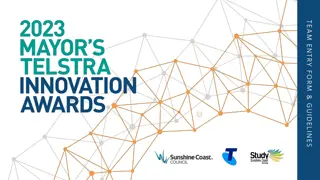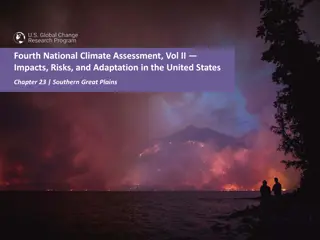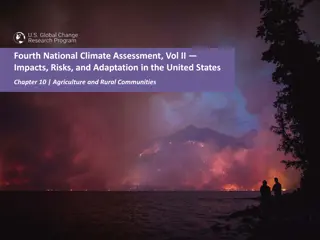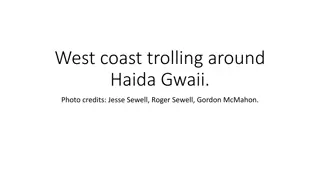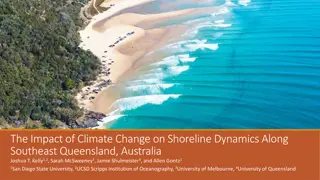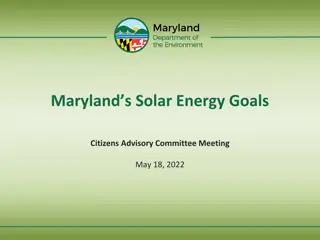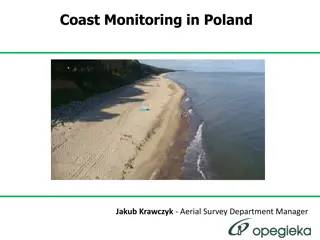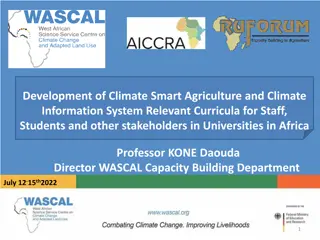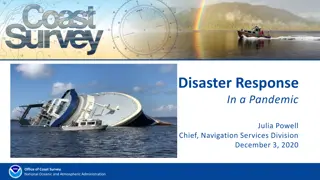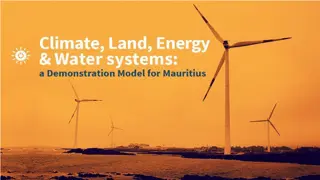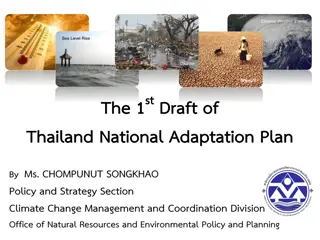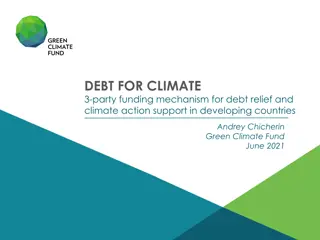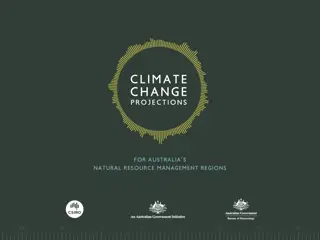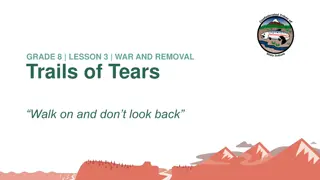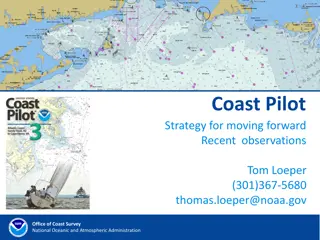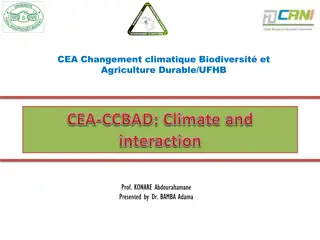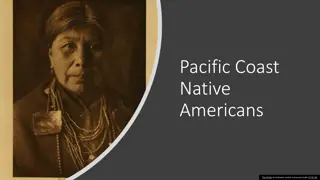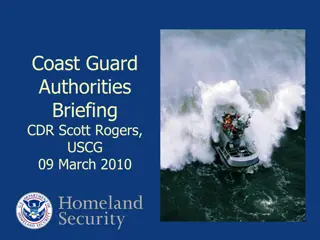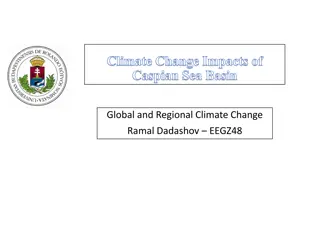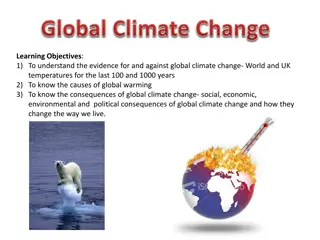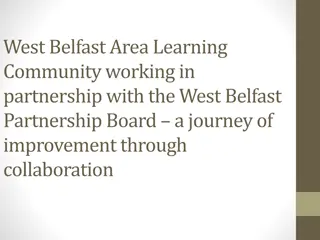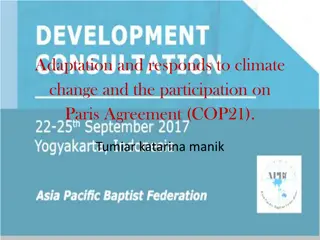Climate Impacts on the U.S. West Coast: Insights and Challenges
Climate impacts on the U.S. West Coast, including marine heat waves, species range shifts, hypoxia, ocean acidification, harmful algal blooms, sea level rise, and coastal erosion. Insights from experts like Jan Newton, NANOOS Director, highlight the significance of monitoring and addressing these environmental changes to protect marine ecosystems and coastal communities.
Download Presentation

Please find below an Image/Link to download the presentation.
The content on the website is provided AS IS for your information and personal use only. It may not be sold, licensed, or shared on other websites without obtaining consent from the author. Download presentation by click this link. If you encounter any issues during the download, it is possible that the publisher has removed the file from their server.
E N D
Presentation Transcript
Insights on Climate Impacts Insights on Climate Impacts affecting the West Coast affecting the West Coast Jan Newton, NANOOS Director
Climate Impacts on the U.S. West Coast Climate Impacts on the U.S. West Coast Marine Heat Waves Species Range Shifts Hypoxia Ocean Acidification (OA) Harmful Algal Blooms (HABs) Sea Level Rise and Storms: Coastal Erosion and Shoreline Changes
Marine Heat Waves and the Coasts Marine Heat Waves and the Coasts GLIDERS SATELLITE PRODUCTS MOORINGS OFFSHORE NDBC data; NANOOS Climatology app MOORINGS ESTUARINE OSU MODIS data; NANOOS Climatology app Woodruff, Mickett; NANOOS
GLIDER Hypoxia Hypoxia B A B C Glider track co-developed by OSU with Columbia River Fish Commission (CRITFC) and Quinault Indian Nation (QIN) MOORINGS ESTUARINE D E C MODELS AND OBSERVATIONS Seasonal J-SCOPE predictions: D E Barth, Seaton; NANOOS Woodruff, Mickett; NANOOS Part of Hood Canal Fish Kill Watch Siedlecki, J-SCOPE; NANOOS QIN took management action based on observations and J-SCOPE forecasts to close the 2018 fishery early due to hypoxia. NANOOS DEVELOPING HYPOXIA APP WITH OBSERVATIONS AND MODELS
PROFILING MOORING OFF COAST Oxygen Mickett; NANOOS
Ocean Acidification Ocean Acidification VALUE OF OBSERVATIONS How to know best water : Suhrbier; PSI LiveOcean aragonite sat n MacCready, LiveOcean; NANOOS This current generation of shellfish farmer is reliant upon data and services from NANOOS. Checking the NANOOS app before seeding a beach or filling a settling tank has become standard practice. -- Margaret Pilaro, Director, Pacific Shellfish Growers Association
Harmful Algal Blooms Harmful Algal Blooms The Marine Heatwave of 2015 stimulated a HAB from Alaska to Mexico shutting down Dungeness crab fishery Moore, Mickett; NOAA NCCOS & NANOOS I start my workday every day by visiting the NVS data explorer for the latest real time data and modelling forecasts. NANOOS and the NVS data explorer have become a routine resource and are an incredible benefit to the management and mitigation of harmful algal bloomsalong Washington s outer coast. One stop shopping to open-access mooring data, satellite imagery, and UW s LiveOcean model have been instrumental in advancing understanding of ocean processes and harmful algal bloom development along Washington s outer coast. Anthony Odell, Research Analyst Lead, Olympic Region Harmful Algal Bloom Monitoring Partnership University of Washington Olympic Natural Resources Center Having the NANOOS automated HAB sampler, with toxin assessment capability, offshore between our harvest beaches and the HAB generation sites will give tribes the forewarning they need to adjust sampling protocols and better protect the health of coastal residents, tribal and non-tribal. Joe Schumacker, Department of Fisheries, Quinault Indian Nation Sutton; NOAA PMEL & NANOOS
Shoreline Changes Shoreline Changes The beach and shoreline monitoring data supported by NANOOS has been instrumental in helping to support [Oregon state] requirements, such as completing new FEMA regulatory maps, updating the science for foredune management planning purposes, developing coastal hazard zone maps to guide development, and monitoring dynamic revetments used for mitigating the effects of coastal erosion Patty Snow, Coastal Program Manager, Oregon Department of Land Conservation and Development
User User- -driven and co driven and co- -designed apps designed apps IOOS is all about harnessing observations and models to provide society with useful information they need for decisions. Climate change sharpens the reasons why this is so important, as coastal responses to global drivers are not homogenous.









